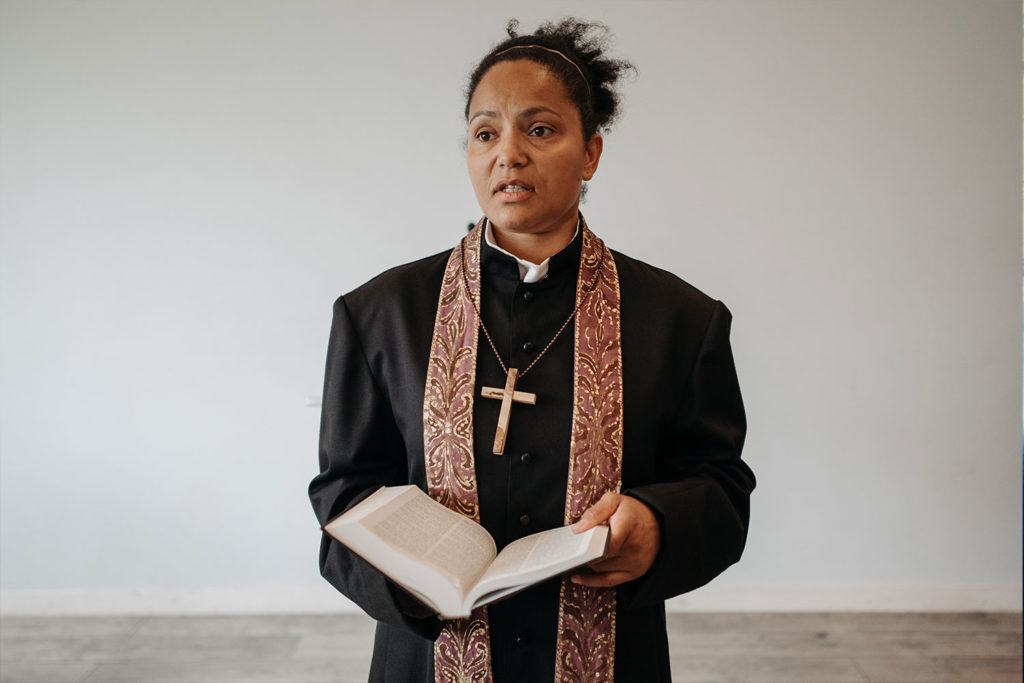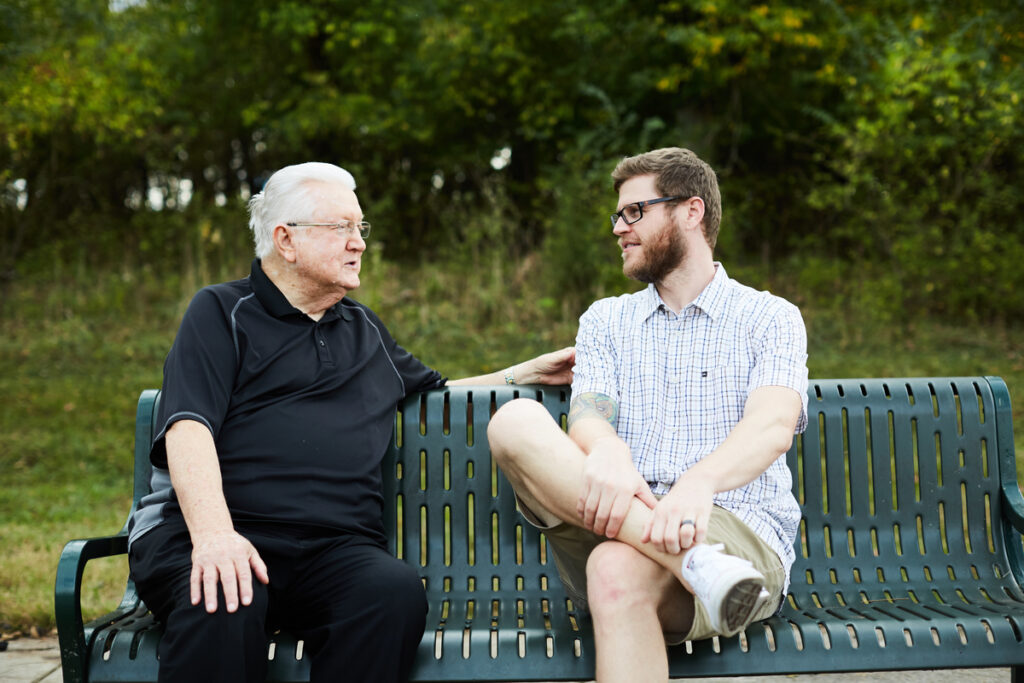By Robert Ndonga
Members: The Christian Church (Disciples of Christ) is a Protestant denomination with a membership of about 800,000 in the United States and Canada.
History:
The denomination known today as the Christian Church (Disciples of Christ) came out of the American “Restoration Movement” that sought to reclaim Biblical practices among Protestant churches in the United States. Followers of Thomas Campbell (born in County Down, Ireland on February 1, 1768) and Barton W. Stone (born in Port Tobacco, Maryland on December 24, 1772) combined in 1832 to begin what came to be known as the Stone-Campbell movement.
Like most renewal movements, disagreements within the two streams of theological thought eventually arose. A major source of conflict was the formation of the American Christian Mission Society, which followers of Thomas Campbell’s ideas felt was not Biblical. Eventually, in 1906, the major factions split into two separate denominations (although many within the movement prefer to not use the word “denomination,” as they feel it indicates an unacceptably concrete level of organization). The “Churches of Christ” formed around those who followed Campbell’s original ideas. In a similar vein, the Christian Church also known as Disciples of Christ formed around the followers of Barton Stone.
Key Personalities and Dates
Barton W. Stone: was born in Port Tobacco, Maryland on December 24, 1772. Stone was educated as a school teacher and entered the ministry through the Presbyterian Church. He served a church in Cane Ridge Kentucky, and after hosting the historic Cane Ridge Revival of 1801, he, along with several others formed the Springfield Presbytery. The new movement rejected all human creeds and placed strong emphasis on appealing to the Bible as the only rule of faith and practice. The Springfield Presbytery was soon dissolved and all ties to any denominational life were broken to enter into unity with the body of Christ at large.
Thomas Campbell: was born in County Down, Ireland, on February 1, 1763 and came to America from Scotland in 1807. He was severely censured by Pennsylvania church authorities because of his refusal to use Presbyterian creeds when administering the Lord Supper. In 1808 he, along others began the Christian Association of Washington, Pennsylvania. That group adopted the motto, “Where the scriptures speak, we speak; where the Scriptures are silent, we are silent.” Campbell and his followers were called “Reformers,” because of their desire to restore the Church to its first century beliefs and practices. This new emphasis in faith and practice came to be known as the “Restoration Movement.”
Alexander Campbell: Born on September 12, 1788 in Ireland, he joined his father Thomas in western Pennsylvania. Biographer Nathaniel Haynes wrote that Thomas and Alexander were “one in their aims, spirit and work.” Near Washington, Pennsylvania, Campbell and his son Alexander, and the Christian Association established the Brush Run Church, which in 1815, became part of an existing Baptist Association. Needless to say, Reformers and Baptists differed in key issues, and in 1830, the bond was broken. The Reformers came to be known as “Disciples.”
A dedicated scholar and educator, Alexander founded Bethany College in Bethany, Virginia (now West Virginia) in 1840 and served as the school’s first president.
1832
The “Christians” and the “Disciples of Christ” agreed on basic beliefs and practices. They united to create a new Christian movement on the American frontier.
1832-1968
The Christians and the Disciples functioned and grew as a movement, often referred to as the “stone-Campbell movement.” During this period, the Disciples saw their union simply as a “brotherhood” In 1960 the Commission of Brotherhood Restructure began the task of designing a new form of organization.
1968-
A representative assembly meeting in Kansas City overwhelmingly approved the provisional design for the Christian Church (Disciples of Christ). Church historian Duane Cummings wrote: “Approval of the provisional design marked the passage of the Disciples into denominational maturity. Officially named the Christian Church (Disciples of Christ), they became a church.”
Aggressive Vision: 2020 Vision
-
1000 new congregations
-
1000 transformed congregations
-
The leadership development necessary to realize these new and renewed congregations
-
All within a context of being an anti-racist/pro-reconciling church.
Beliefs and Practices
Disciples always have opposed…the use of creeds to exclude persons from the church. It was (the) use of creeds as ‘tests of fellowship’ that the Disciples’ founding fathers fingered as the major cause of division among Christians…So, unlike most other churches, Disciples do not have an official doctrinal statement they can refer to as their distinctive doctrinal stance. For many years, The Christian Evangelist, a forerunner of our present journal “The Disciple”, carried a maxim in its masthead: “In essentials, unity: in nonessentials, liberty; in all things, charity.” This maxim expresses the celebrated conviction among Disciples that liberty should be allowed in the nonessential areas in which most creedal statements dictate. A widely-known slogan among Disciples claims “No Creed but Christ.”
Practices
Communion:
The Lord’s Supper or communion is celebrated in weekly worship services and is open to all who believe in Jesus Christ regardless of denominational affiliation.
Baptism:
Disciples practice baptism by immersion, but also honor other baptism traditions from other denominations. The use of the specific form of baptism; that is, baptism by immersion is seen as powerfully symbolic. As such, it mirrors Jesus’ own baptism; it acts out dying with Christ, and emerging to new life; it is a “putting on” of Christ.
Churches of Christ do not practice infant baptism. Rather, infant dedication is practiced and cherished as a time honored tradition among Disciples. An infant so dedicated confirms that dedication with a personal faith response usually during the early teenage years, about the same time when most Disciples are baptized.
Salvation:
Disciples embrace the broad meaning of the term “Salvation” to include notions of deliverance from all threats of life, both now and hereafter. This explains their passion and unwavering quest for social, political, and economic justice.
Where do the Disciples stand today?
Originally part of the Restoration Movement (begun by Thomas and Alexander Campbell, Barton W. Stone and others), the Disciples of Christ adopted a denominational structure and created Christian Missionary Fellowship in the late 1800s, thus “abandoning” the “non-denominational” principle of the Movement.
In recent years (1970s following), the Disciples of Christ denomination has broadened its freedom of belief and has endorsed the following positions which differ vastly with Southern Baptists and other Evangelical churches:
-
ordained women ministers
-
ordained women elders
-
denied the requirement of immersion for salvation as essential to salvation, as they did when they were first founded.
-
participated in unity discussions with the Roman Catholic church, apparently acknowledging the latter’s claims and doctrines.
-
A few have denied the virgin birth of Jesus
-
A few have participated with other liberal denominations in undermining the accuracy and authenticity of the Bible.
-
A few have supported gay marriage.
Resources:
-
Report of the Commission on Theology in response to Resolution No. 87828, “Concerning Salvation in Jesus Christ.”
-
Williamson, Clark M. Williamson, “Theological Reflection and Disciples Renewal,” in Michael Kinnamon, ed., Disciples of Christ in the 21st Century (St. Louis, MO: CBP Press, 1988).
-
M. Eugene Boring, Disciples and the Bible: A History of Disciples Biblical Interpretation in North America (St. Louis: Chalice Press, 1997) 45-47.On the plan of salvation, cf. discussion of Walter Scott, esp. 395-402 on various forms of the steps for salvation.Cf. also Isaac Errett’s classical statement, cited and discussed in Boring, 128-131, 396. In the second generation of Disciples’ history, Robert Milligan’s Scheme of Redemption was already tending toward emphasis on human act rather than God’s initiative and grace. Cf. Boring’s Excursus, “Five Generations of the ‘Five Finger Exercise.'”
-
Mark G. Toulouse, Joined in Discipleship: The Shaping of Contemporary Disciples Identity (St. Louis: Chalice Press, 2nd. Revised and Expanded Edition 1997) 273-278.
-
Paul Tillich, “You Are Accepted, In Shaking the Foundations (1948), 153-163.
-
World Council of Churches, Baptism, Eucharist, and Ministry: Faith and Order Paper, No. 111 (Geneva: World Council of Churches, 1982). Disciples affirm this document of the World Council of Churches. Cf. also Clark Williamson, Baptism: Embodiment of the Gospel, The Nature of The Church: Study Series 4 (St. Louis: Christian Board of Publication, 1989). An excellent discussion of the development of Disciples thought about baptism. This little book also contains, as an appendix, a copy of “A Word to the Church on Baptism,” a report of the Commission on Theology affirmed by the General Assembly of the Christian Church (Disciples of Christ) in 1987.
Published March 30, 2016




